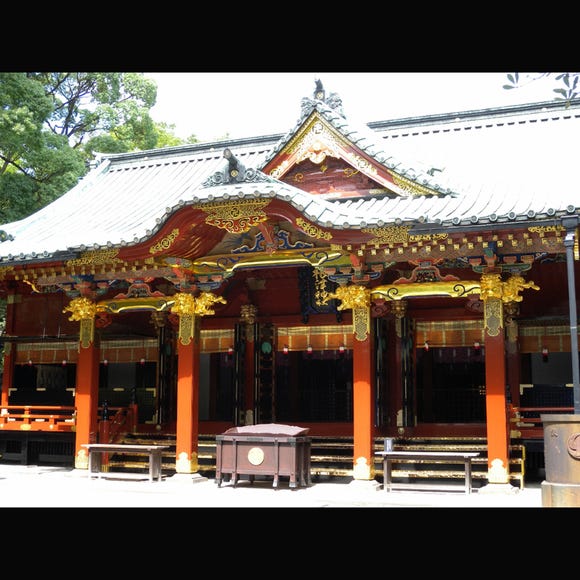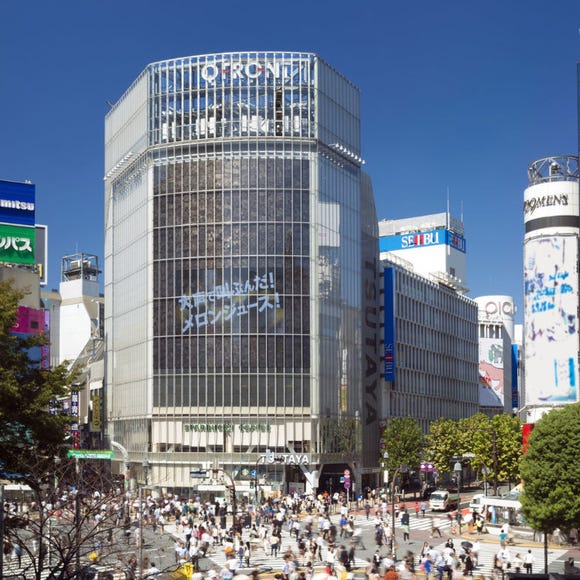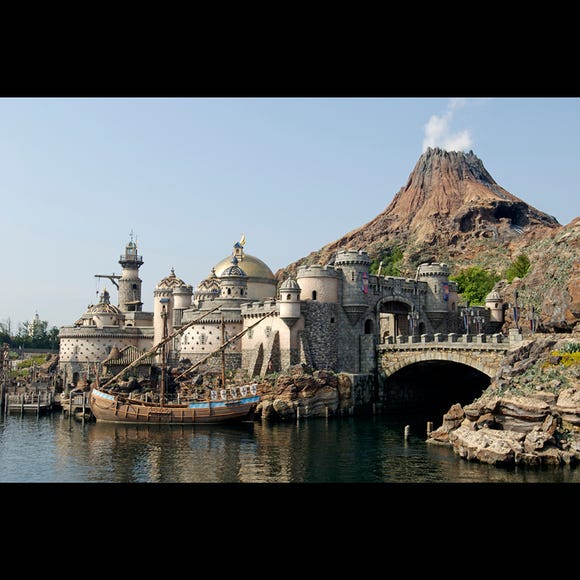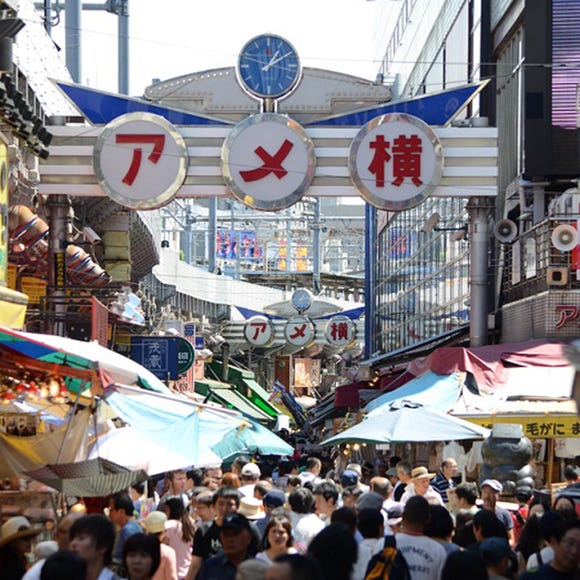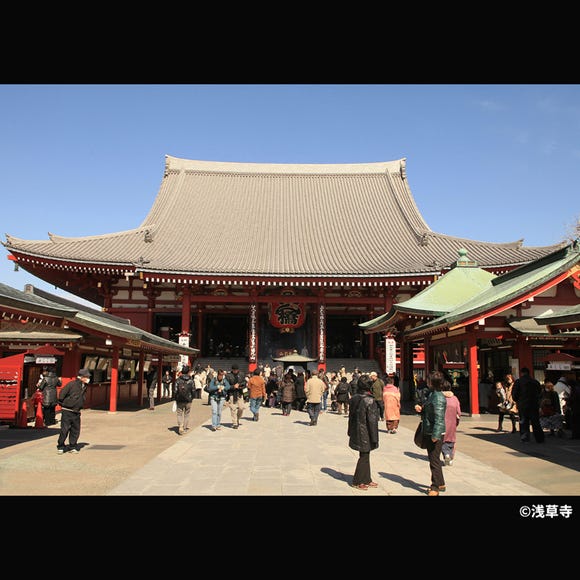
Tokyo, a city that seamlessly blends tradition with innovation, offers a captivating journey through its architectural wonders. From the serene elegance of historic palaces to the cutting-edge designs of modern skyscrapers, Tokyo and its surrounding areas are a testament to the city's rich cultural heritage and its commitment to embracing the future. In this article, we will embark on a virtual tour of some of the most iconic architectural landmarks in Tokyo and its surroundings, showcasing the unique blend of old and new that defines this vibrant metropolis.
1. The Imperial Palace
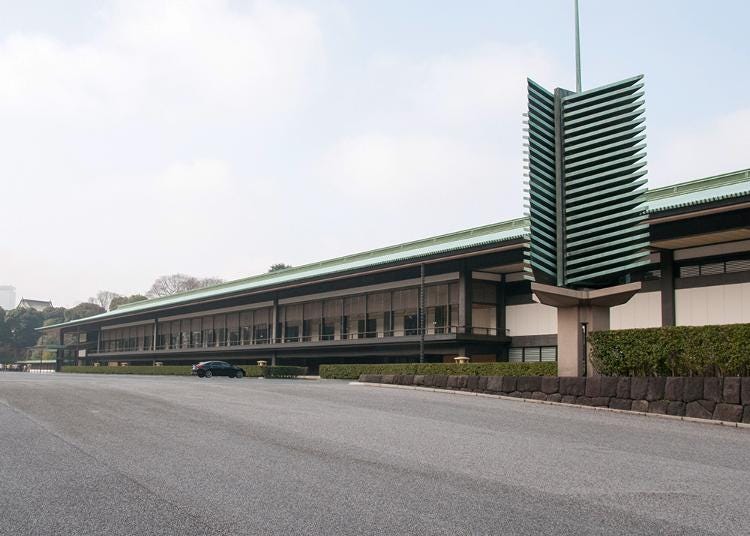
The palace's historical journey traces back to its origins as Edo Castle, the seat of power for the Tokugawa shogunate. However, in 1868, it underwent a significant transformation, becoming the official residence of the Imperial family. Initially referred to as "kyujo" (the Imperial castle) starting from 1888, its name underwent another change in 1948, becoming the "kokyo," or the Imperial Palace as we know it today.
The Imperial Palace complex comprises several key areas, including the following:
- Gosho: This area serves as the residence of their Majesties, the emperor and empress.
- Kyuden (the Imperial Hall): A central ceremonial space within the palace.
- Other Buildings: Various structures house the government offices of the Imperial Household Agency.
One noteworthy section within the palace grounds is the Kokyo Higashi Gyoen (the East Gardens of the Imperial Palace), which also houses the Tokagakudo Concert Hall. While the palace's interior is off-limits to visitors, there is the opportunity to explore the palace premises and the government office buildings of the Imperial Household Agency. Furthermore, the Imperial Palace grounds offer an array of natural beauty during the summer months. Notable features include the Lotus Moat, where you can marvel at large lotus flowers, and the serene Yamashita Street, which is adorned with lush greenery.
For those interested in a general visit tour, it typically spans about an hour and 15 minutes, but prior permission is necessary. To access Kikyo-mon (the Kikyo gate), the designated meeting point for the general visit tour, simply take a short 10-minute walk from Exit No. 6 of Nijubashi-mae Station on the Tokyo Metro Chiyoda Line or the D2 Exit of Otemachi Station on the Metropolitan Subway Mita Line.
-
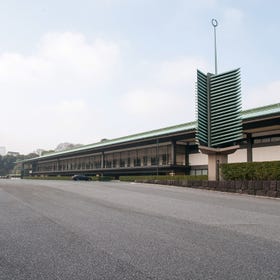
-
Address
1-1, Chiyoda, Chiyoda-ku, Tokyo, 100-8111
View Map -
Nearest Station
Nijubashimae "Marunouchi" Station (Tokyo Metro Chiyoda Line)
10 minutes on foot
- Phone Number 03-3213-1111
-
Address
1-1, Chiyoda, Chiyoda-ku, Tokyo, 100-8111
2. Tokyo International Forum
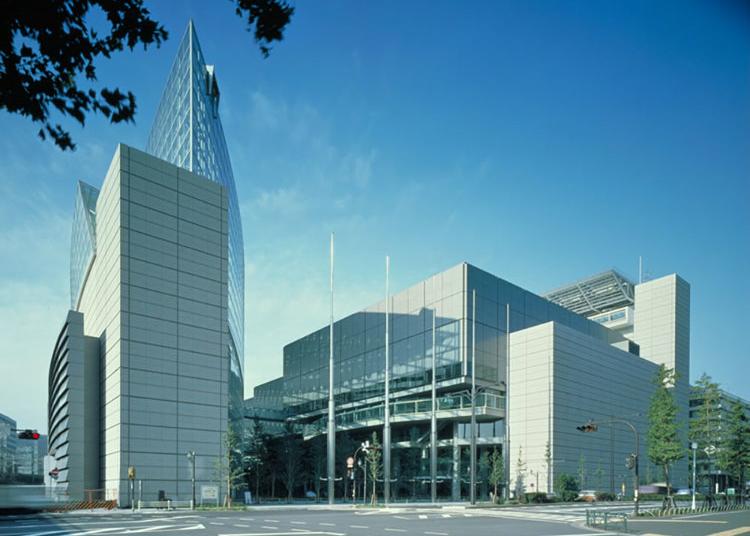
The Tokyo International Forum stands as a remarkable institution, equipped with eight spacious halls and 34 versatile conference rooms designed to serve as a hub for the dissemination of diverse cultural information. These venues, each uniquely characterized, accommodate a rich tapestry of events spanning various genres, including international conferences, ceremonies, academic symposia, exhibitions, concerts, musical performances, and fashion showcases, held throughout the year. As a result, the Tokyo International Forum plays a pivotal role in the propagation of multifaceted cultural knowledge.
Beyond its role in fostering cultural exchange, the architectural marvel of the Tokyo International Forum itself is deserving of admiration. Its most iconic feature, the ship-shaped Glass Hall, stands as a testament to architectural ingenuity. This colossal space stretches an impressive 207 meters in length, reaching a towering height of 57.5 meters and expanding to a maximum width of 32 meters. Notably, this magnificent structure boasts the use of approximately 2,600 individual glass pieces in its construction.
Whether or not one attends an event hosted within its walls, the Tokyo International Forum remains a popular attraction in its own right. Visitors can relish the opportunity to marvel at the building's distinctive and captivating exterior, making it a compelling destination for architectural enthusiasts and curious passersby alike.
-
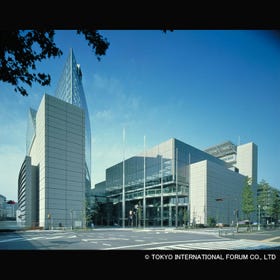
-
Address
3-5-1, Marunouchi, Chiyoda-ku, Tokyo, 100-0005
View Map -
Nearest Station
Yurakucho Station (JR Keihin-Tohoku Line / JR Yamanote Line / Tokyo Metro Yurakucho Line)
1 minute on foot
- Phone Number 03-5221-9000
-
Address
3-5-1, Marunouchi, Chiyoda-ku, Tokyo, 100-0005
3. Tokyo Central Post Office
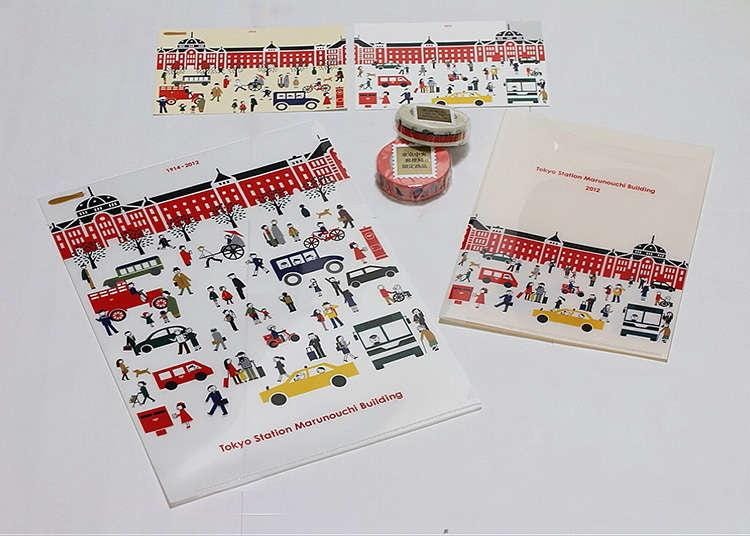
The Tokyo Central Post Office boasts a storied history, dating back to its establishment in 1871 as one of Japan's pioneering postal offices. In a significant transformation in 2012, it relocated to its present site, now situated as the ground-level component of the JP Tower. Since this move, it has garnered widespread attention and acclaim as one of Japan's must-visit tourist destinations.
This post office offers a unique array of products, including clear document holders, masking tapes, and postcards, all featuring the iconic motif of the Tokyo Marunouchi Station Building. These exclusive items have gained popularity as novel Tokyo souvenirs, cherished by visitors seeking a distinctive memento of their time in the city.
For those who wish to add a touch of authenticity to their correspondences, Tokyo Central Post Office provides a special treat. By simply depositing a postcard in the mailboxes strategically placed around various locations within Tokyo Station, visitors can expect a delightful surprise. The postcard will bear a date stamp adorned with an enchanting depiction of the Tokyo Station's scenic beauty, a cherished keepsake of their journey through this bustling metropolis.
-
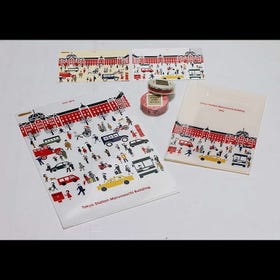
-
Address
2-7-2, Marunouchi, Chiyoda-ku, Tokyo, 100-0005
View Map -
Nearest Station
Tokyo Station (Tokaido Shinkansen Line / Hokkaido Shinkansen Line / Tohoku Shinkansen Line / Akita Shinkansen Line / Yamagata Shinkansen Line / Joetsu Shinkansen Line / Hokuriku Shinkansen Line / JR Tokaido Main Line / JR Yokosuka Line / JR Sobu Main Line / JR Sobu Main Line (Rapid) / JR Keihin-Tohoku Line / JR Yamanote Line / JR Chuo Main Line / JR Keiyo Line / JR Ueno Tokyo Line / Tokyo Metro Marunouchi Line)
- Phone Number 03-3217-5231
-
Address
2-7-2, Marunouchi, Chiyoda-ku, Tokyo, 100-0005
4. Makuhari Messe
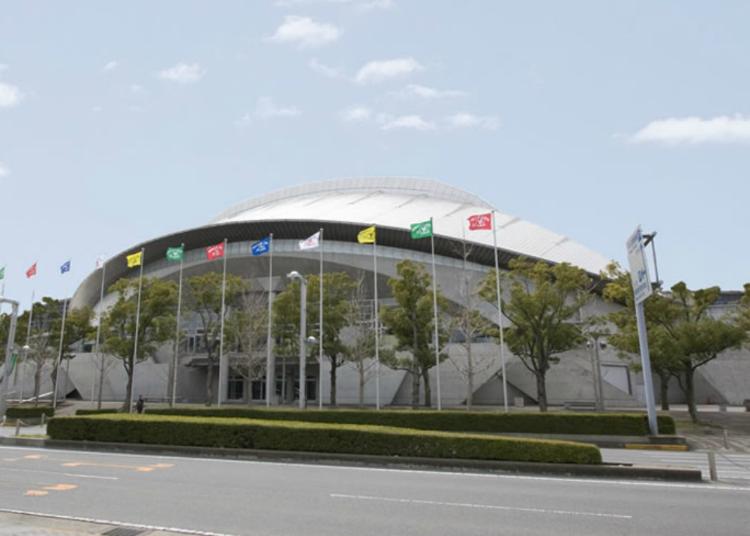
Makuhari Messe, a prominent venue in the Chiba prefecture, boasts a multifaceted architectural landscape comprising three distinct facilities, each with its unique character and purpose. These three components are the International Exhibition Hall building, the International Conference Hall building, and the Makuhari Event Hall building, collectively creating a dynamic hub for a wide range of activities.
International Exhibition Halls 1 through 8 are thoughtfully designed to replicate the undulating terrain of the Boso Peninsula, effectively creating a stunning visual reminiscent of a mountain range. In contrast, International Exhibition Halls 9 through 11 feature striking arched roofs that symbolize the ebb and flow of the waves along Chiba's eastern and western coastlines. These design elements not only add to the aesthetics but also infuse the venue with a sense of regional identity.
The International Conference Hall is a versatile space serving various purposes, from hosting conferences and corporate training sessions to facilitating lively parties and gatherings. Within this building, a total of 22 conference rooms are available, including a spacious convention hall capable of accommodating up to 1,600 attendees, making it a preferred choice for events of diverse scales.
At the heart of Makuhari Messe stands the distinctive Makuhari Event Hall, characterized by its striking dome shape. With a remarkable capacity to hold up to 9,000 people, this hall plays host to a wide spectrum of occasions, including concerts, ceremonies, sporting events, exhibitions, and public lectures. To cater to the culinary needs of visitors, the facility also houses restaurants and stalls offering an array of delectable light meals, ensuring a well-rounded and enjoyable experience for all who step through its doors.
-
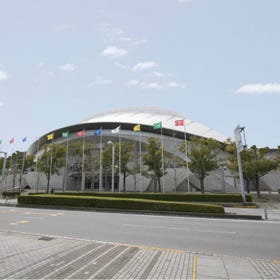
-
Address
2-1, Nakase, Mihama-ku, Chiba-shi, Chiba, 261-8550
View Map -
Nearest Station
Kaihin-Makuhari Station (JR Keiyo Line)
5 minutes on foot
- Phone Number 043-296-0001
-
Address
2-1, Nakase, Mihama-ku, Chiba-shi, Chiba, 261-8550
5. Tokyo Stock Exchange, Inc.
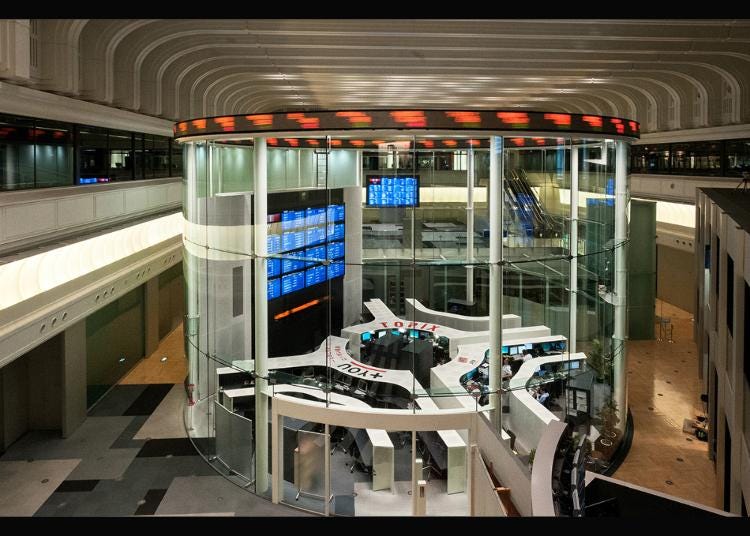
The Tokyo Stock Exchange, often regarded as the beating heart of the Japanese economy, opens its doors to visitors for a captivating tour experience. On weekdays, the tour hours extend from 9:00 am to 4:30 pm, with the final admission allowed until 4:00 pm. As you approach this iconic institution, its imposing and grand exterior befits its stature as the epicenter of Japan's economic activities.
Upon entering through the West entrance, designed specifically for visitors, you'll be greeted by a welcoming foyer featuring soaring ceilings that echo the significance of this financial hub. Ascending to the second floor, you'll find yourself in the midst of the market center, a place you may have seen numerous times in economic news reports. While capturing the moment with camera flashes is not permitted, you are free to take photographs inside the building, capturing the essence of this financial epicenter.
For those interested in delving deeper into the world of stock trading, we highly recommend the stock trading simulation game, which can be arranged in advance for groups of three or more. This immersive experience offers valuable insights into the dynamics of stock trading.
On the first floor, the TSE History Museum awaits, where a remarkable collection is on display, including precious vintage stock certificates issued before the war. This museum holds a unique distinction as the sole facility in Japan that exhibits such a vast array of historical stock certificates, making it an essential visit for those interested in the rich economic heritage of Japan.
-
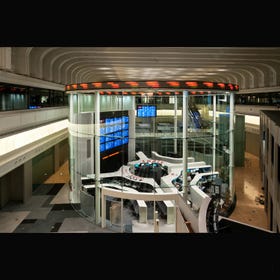
-
Address
2-1, Nihonbashikabutocho, Chuo-ku, Tokyo, 103-8220
View Map -
Nearest Station
Kayabacho Station (Tokyo Metro Hibiya Line / Tokyo Metro Tozai Line)
5 minutes on foot
- Phone Number 03-3666-0141
-
Address
2-1, Nihonbashikabutocho, Chuo-ku, Tokyo, 103-8220
6. Jiyu Gakuen Myonichikan
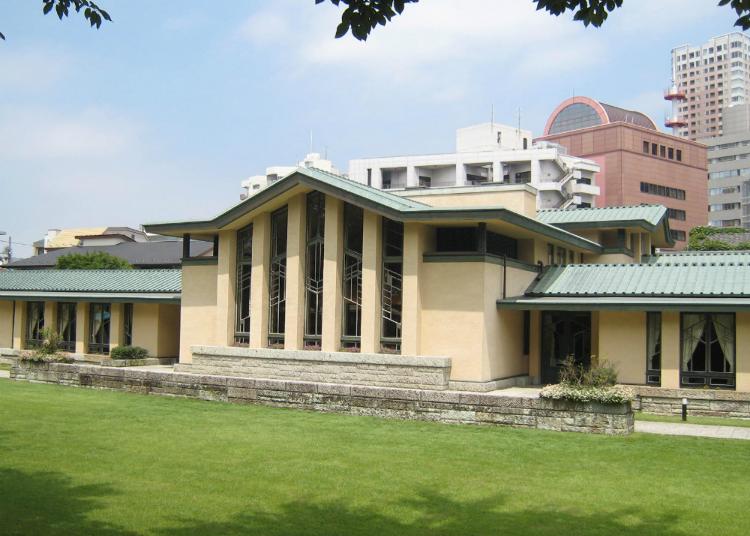
Jiyugakuen Myonichikan, also known as the "House of Tomorrow," has a rich history intertwined with the foundation of the Jiyu-gakuen educational institution, established by Mr. and Mrs. Yoshikazu and Motoko Hani. This remarkable building, a testament to architectural genius, was designed by the renowned American architect Frank Lloyd Wright during his visit to Japan, a period when he was also tasked with designing the iconic Imperial Hotel in Tokyo.
What makes Jiyugakuen Myonichikan even more remarkable is its resilience in the face of adversity. Having withstood the catastrophic 1923 Great Kanto Earthquake and surviving the ravages of air raids during World War II, this architectural gem was rightfully recognized for its historical and cultural significance. In May 1998, it was designated as an Important Cultural Property of Japan, solidifying its place as a cherished cultural treasure.
Today, visitors have the opportunity to explore this architectural marvel during its designated open hours. The rooms within the Myonichikan are available for rent, providing individuals and groups with a unique chance to immerse themselves in its exquisite atmosphere. These versatile spaces have been host to a myriad of events, including class reunions, seminars, concerts, and social gatherings.
Moreover, Jiyugakuen Myonichikan offers a captivating backdrop for wedding ceremonies, set against a backdrop of lush lawns and a building adorned with intricate, geometrically designed windows. The blend of history, design, and functionality makes this venue a truly exceptional destination for those seeking an extraordinary experience in the heart of Tokyo.
-
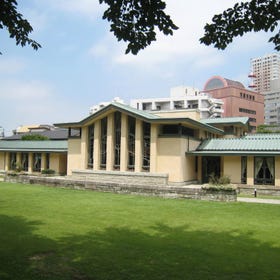
-
Address
2-31-3, Nishiikebukuro, Toshima-ku, Tokyo, 171-0021
View Map -
Nearest Station
Ikebukuro Station (JR Shonan Shinjuku Line / JR Yamanote Line / JR Saikyo Line / Tokyo Metro Marunouchi Line / Tokyo Metro Yurakucho Line / Tokyo Metro Fukutoshin Line / Seibu Ikebukuro Line / Tobu Tojo Line)
5 minutes on foot
- Phone Number 03-3971-7535
-
Address
2-31-3, Nishiikebukuro, Toshima-ku, Tokyo, 171-0021
7. Hatoyama Hall
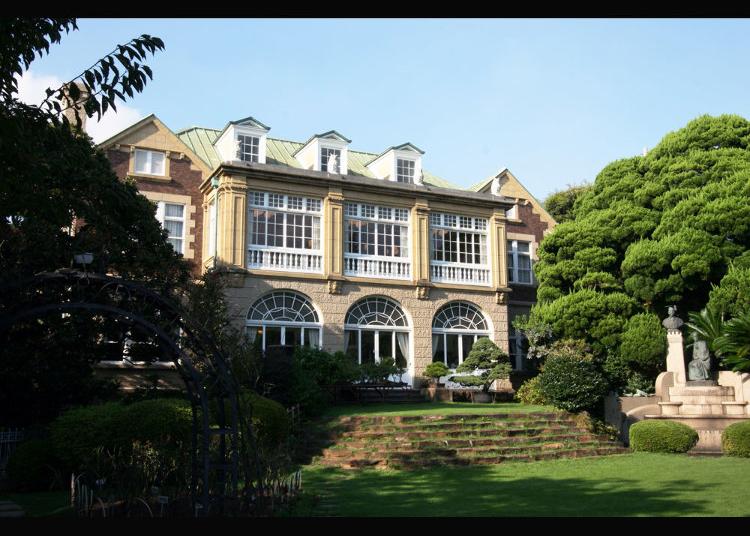
Hatoyama Hall, a Western-style residence, holds a storied history that dates back to its commission in 1924 by none other than former Prime Minister Ichiro Hatoyama. This illustrious building served as the backdrop for pivotal moments in Japanese political history. It was within these walls that Prime Minister Hatoyama played a pivotal role in the formation of the Liberal Party, which subsequently evolved into the present-day Liberal Democratic Party. Moreover, it was here that he diligently prepared for the historic task of normalizing diplomatic relations with the Soviet Union.
What sets Hatoyama Hall apart is its distinctive British-style architectural design, which was a rarity in its era. Remarkably, the structure incorporates the innovative use of reinforced concrete, a testament to its forward-thinking design sensibilities.
The residence occupies a generous 2,000-square-meter site, complete with a picturesque courtyard where the beauty of roses and other seasonal flowers unfolds throughout the year. In 1996, the residence underwent a meticulous renovation, ultimately transforming into Hatoyama Hall, a living testament to Prime Minister Hatoyama's notable achievements. Today, it stands as a beacon of history and is accessible to the public year-round.
Beyond its historical significance, Hatoyama Hall has also played a role in the world of entertainment. The residence has been a favored location for filming movies, television dramas, and commercials, further cementing its status as an iconic piece of Japanese heritage with enduring appeal.
-
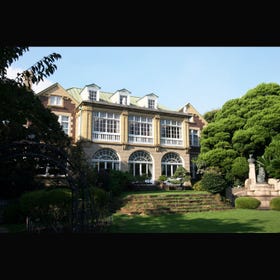
-
Address
1-7-1, Otowa, Bunkyo-ku, Tokyo, 112-0013
View Map -
Nearest Station
Edogawabashi Station (Tokyo Metro Yurakucho Line)
7 minutes on foot
- Phone Number 03-5976-2800
-
Address
1-7-1, Otowa, Bunkyo-ku, Tokyo, 112-0013
8. Bank of Japan Head Office
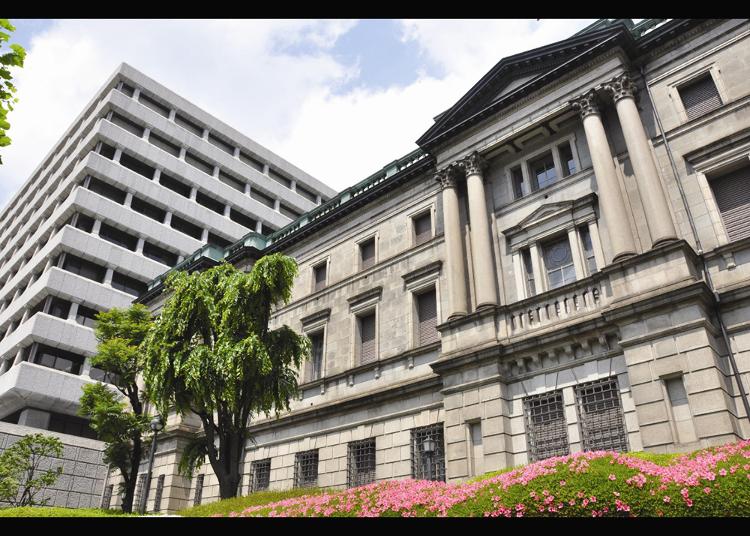
The Bank of Japan (BOJ) stands as the cornerstone of Japan's financial infrastructure, serving as the nation's central bank and the sole issuer of its national currency. Established on October 10, 1882, the BOJ was originally founded as an authorized corporation with a specific mandate: to stabilize commodity prices and safeguard the stability of the financial system.
Over time, the role and operations of the BOJ have evolved considerably. Today, it engages in a wide spectrum of financial activities that encompass financial management, international transactions, as well as the distribution and regulation of currency notes.
In April 1896, the bank relocated to its present-day location, marking a pivotal moment in its history.
For those interested in exploring the legacy of the Bank of Japan, there is an opportunity to visit part of the Main Building, known as the Old Building. This historic structure preserves the ambiance of bygone eras and holds the distinction of being designated as an Important Cultural Property. Included in the tour is a glimpse into the basement vault, which remained in use until 2004, and access to the first floor, home to the bank's transaction office, located in the New Building.
It's important to note that advance reservations are necessary for touring the BOJ, and visitors will be required to present photo identification, such as a passport, upon entry to the buildings, ensuring a seamless and informative visit to this cornerstone of Japan's financial history.
-
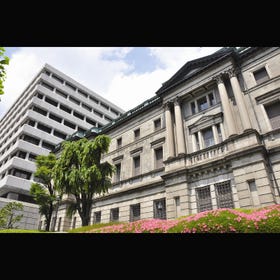
-
Address
2-1-1, Nihonbashihongokucho, Chuo-ku, Tokyo, 103-0021
View Map -
Nearest Station
Mitsukoshimae Station (Tokyo Metro Ginza Line / Tokyo Metro Hanzomon Line)
1 minute on foot
- Phone Number 03-3279-1111
-
Address
2-1-1, Nihonbashihongokucho, Chuo-ku, Tokyo, 103-0021
9. Nikolai-do Holy Resurrection Cathedral
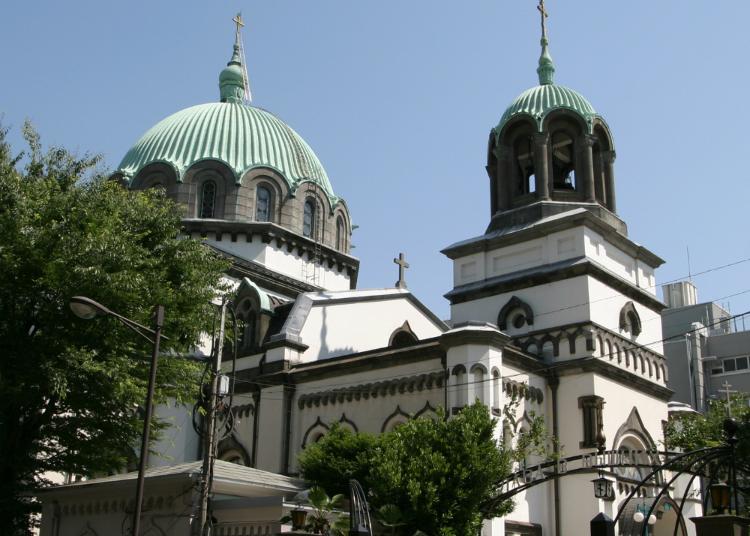
The official name of this remarkable edifice is the "Holy Resurrection Cathedral in Tokyo," although it is more affectionately known as "Nicholai-do." This cathedral's rich history is deeply intertwined with the legacy of Saint Nicholas, honored in the Orthodox Church with the esteemed title of "Equal to the Apostles." Saint Nicholas established this cathedral with a profound purpose – to spread the Orthodox faith from the distant shores of Russia to the welcoming embrace of Japan. It is this enduring connection to Saint Nicholas that bestowed upon the cathedral its familiar and cherished name, Nicholai-do.
Within the expansive tapestry of the Orthodox Church, the cathedral holds a pivotal role, standing as a spiritual beacon among the approximately 60 Orthodox churches scattered throughout Japan. The cathedral's architectural style is a testament to its cultural and historical significance, embracing the Byzantine tradition characterized by thick walls, modestly sized windows, and a commanding central dome.
For Orthodox Christians, Nicholai-do is more than just a place of worship; it is a sacred sanctuary that plays a central role in their lives. Every day, faithful congregants gather within its hallowed halls to mark significant milestones and spiritual journeys. From baptisms to the profound ritual of the Divine Liturgy, from daily prayers to the joyous celebration of weddings, and from the solemnity of funerals to various other spiritual occasions, Nicholai-do stands as a timeless house of prayer where believers find solace, guidance, and a profound connection to their faith. It is a place where the spirit of Saint Nicholas lives on, continuing to bridge the divide between distant lands and souls in search of divine grace.
-
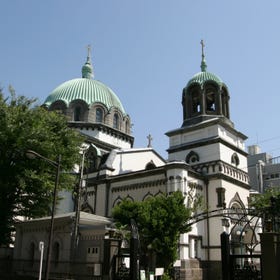
-
Address
4-1, Kandasurugadai, Chiyoda-ku, Tokyo, 101-0062
View Map -
Nearest Station
Ochanomizu Station (JR Chuo Main Line / Tokyo Metro Marunouchi Line / JR Sobu Line)
2 minutes on foot
-
Address
4-1, Kandasurugadai, Chiyoda-ku, Tokyo, 101-0062
- Area
- Category
*Prices and options mentioned are subject to change.
*Unless stated otherwise, all prices include tax.
Limited time offer: 10% discount coupons available now!
-

Discover Osaka Station City: A Journey Through Its Most Fascinating Spots
-

15 Must-Try Restaurants in Ikebukuro: From Aged Yakiniku to All-You-Can-Eat Sushi, Plus Adorable Animal Cafés
-

12 Unique & Fun Tokyo Food Tours to Enjoy in 2024
-

Best Things to Do in Tokyo in April 2024: Events, Festivals & More
-

15 Must-Try Sushi Restaurants in Tokyo (+5 Trending Areas to Explore for Foodies)
-

The CASIO S100: How CASIO's Masterpiece Calculator Redefines Business Elegance With Japan-Made Reliability
-
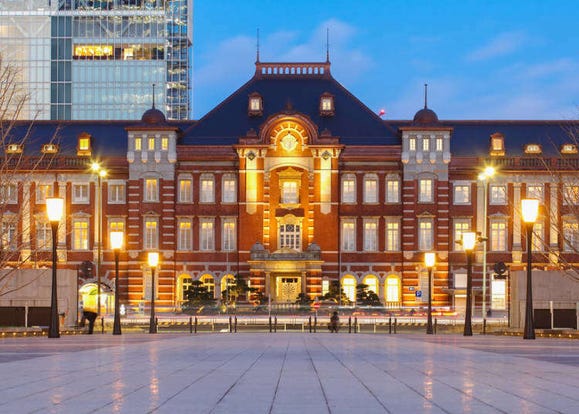
Exploring Tokyo: 3 Must-Visit Spots around Tokyo Station
-
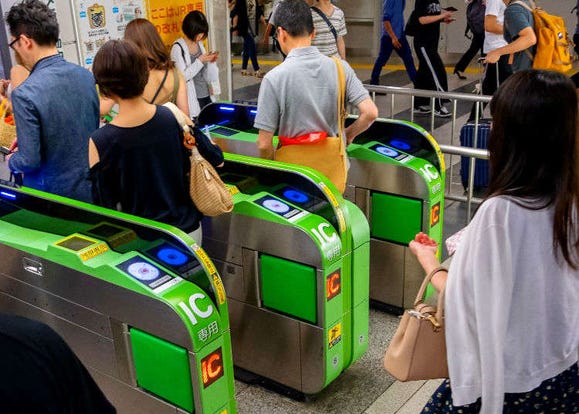
JR Edition: Visit all of Tokyo in one Day with the Tokyo Metropolitan District Pass!
-
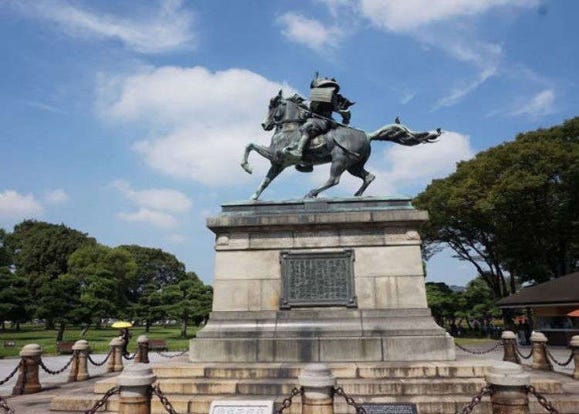
A thorough look at the sight-filled Imperial Palace
-
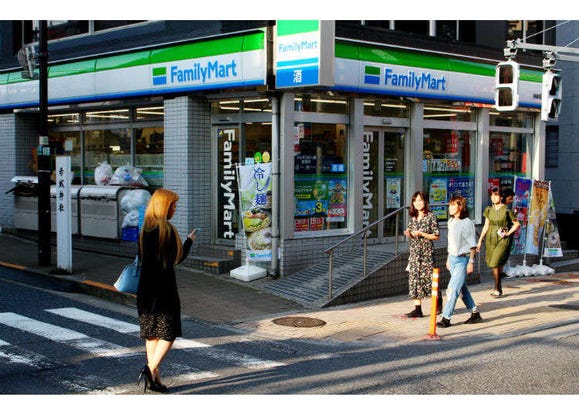
10 Important Japanese Phrases to Know Before You Enter a Japanese Convenience Store!
-
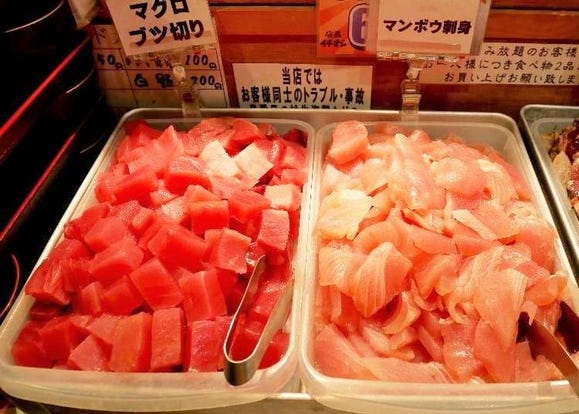
Numazuko Kaisho in Ueno: Good Quality, All-You-Can-Eat Seafood for Just US$12!?
-
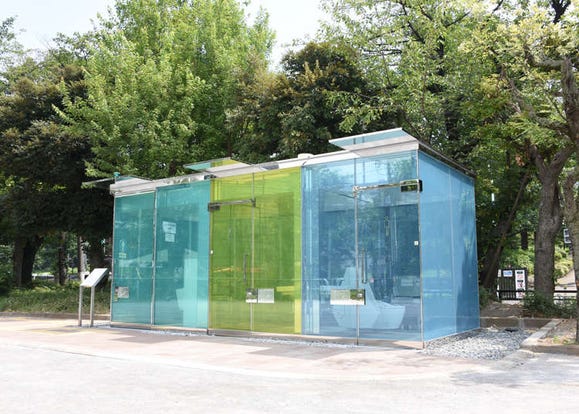
Transparent Bathrooms?! You Won't Believe What Tokyo Just Did With Its Public Toilets
- #best ramen tokyo
- #what to buy in ameyoko
- #what to bring to japan
- #new years in tokyo
- #best izakaya shinjuku
- #things to do tokyo
- #japanese nail trends
- #what to do in odaiba
- #onsen tattoo friendly tokyo
- #daiso
- #best sushi ginza
- #japanese convenience store snacks
- #best yakiniku shibuya
- #japanese fashion culture
- #best japanese soft drinks

















